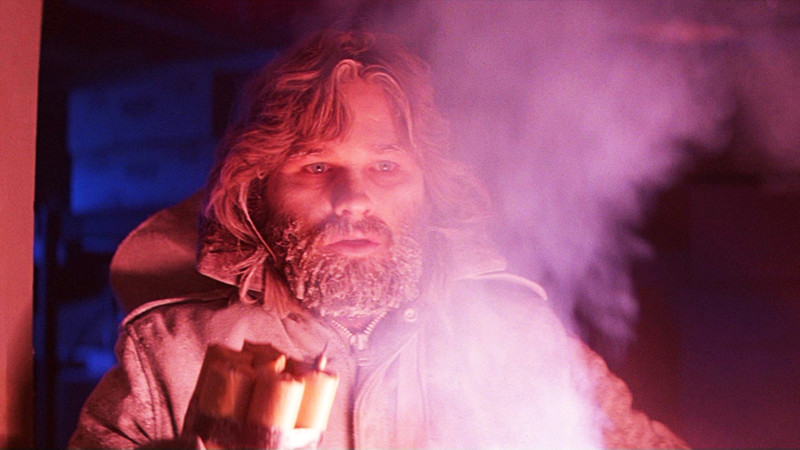
When legendary film director John Carpenter released his third film “Halloween” film in 1978, it was a game changer when it came to horror movies, becoming a commercial hit with audiences and praised by film critics. The low-budget thriller would go on to create a subgenre of horror films known as slasher movies.
“Halloween” established Carpenter as a force to be reckoned with in the film industry after grossing $47 million at the box office, an impressive feat because the movie was made on a $300K budget. His next two films, “The Fog” and “Escape from New York”, were also huge commercial successes, and Carpenter’s next film would move him away from low-budget filmmaking to a big Hollywood production.
“The Thing”, produced by Universal Studios, was Carpenter’s biggest production to date with a $15 million budget. However, after filming was complete and the movie was released in theaters, film critics panned the movie, despising the film for its gory special effects, and it only became a modest hit at the box office.
Film critic Roger Ebert wrote about the film: “’The Thing’ is a great barf-bag movie, all right, but is it any good? I found it disappointing, for two reasons: the superficial characterizations and the implausible behavior of the scientists on that icy outpost.”
Also, The New York Times film critic Vincent Canby condemned the film with the following review: “John Carpenter’s ‘The Thing’ is a foolish, depressing, overproduced movie that mixes horror with science fiction to make something that is fun as neither one thing or the other.
Sometimes it looks as if it aspired to be the quintessential moron movie of the ’80s — a virtually storyless feature composed of lots of laboratory-concocted special effects, with the actors used merely as props to be hacked, slashed, disemboweled and decapitated, finally to be eaten and then regurgitated as — guess what? — more laboratory-concocted special effects.”
After riding high, directing three successful films back to back, Carpenter had this to say about the dismal reaction to his sixth film: “I take every failure hard. The one I took the hardest was ‘The Thing’. My career would have been different if that had been a big hit. The movie was hated. Even by science-fiction fans. They thought that I had betrayed some kind of trust, and the piling on was insane. Even the original movie’s director, Christian Nyby, was dissing me.”
“The Thing” proves that critics don’t always recognize a great film right away because a few years later, once the film is released on video and played on cable television, the movie can develop a massive cult following. Film critics may have since changed their opinion about the movie, hailing it as a classic.
And 35 years later, “The Thing” is still a tense depiction of paranoia with insane special effects. Carpenter described why the film resonates with audience so many years later: “Basically, it’s the lack of trust that’s in the world now, we see it all over, countries, people. We don’t trust each other anymore. We don’t know who to trust. We’re with somebody that we think maybe they’re our loved ones and they may attack us. And that’s what the Thing is, it has a lot of truth in it, kinda dressed up as a horror movie.”
That universal human fear that Carpenter describes is the reason the movie captivates viewers to this very day, making “The Thing” a masterpiece of horror cinema.
1. The Location
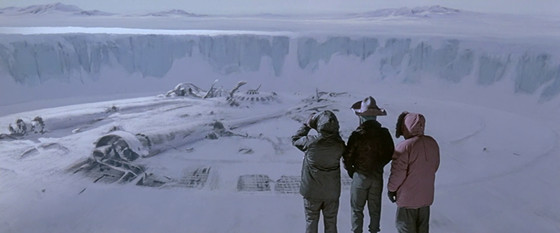
Isolated on a research facility in Antarctica surrounded by miles of snow, ice, and cold weather, there is no escape for any of the characters, or the viewer, for that matter. The location amplifies the danger facing the men battling this mysterious creature from outer space. When the movie starts, we watch two Norwegian men ride in a helicopter over barren landscape on a search and destroy a mission to kill a fleeing dog.
The beginning of the movie foreshadows the horror that awaits, and Carpenter had this to say about the opening sequence: “There’s a very somber kind of inevitability to the film as it begins; you see a helicopter flying and they’re chasing a dog and it already feels like the end of the world to me, and that’s what this is; it’s a apocalyptic movie.”
The remote location means there’s no escaping the fight; the characters must defeat this monster from outer space because if they try to flee, the brutal elements will surely kill them. The location where the story takes place traps the characters as well as the audience, and the vast region of Antarctica suddenly becomes incredibly claustrophobic for anyone watching.
2. The Ensemble Cast
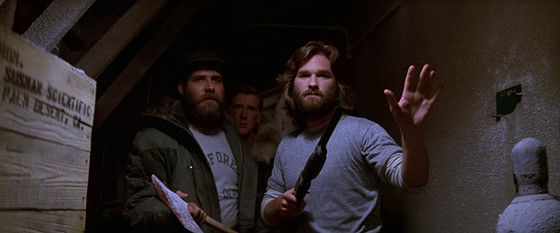
While “The Thing” is best known for its special effects, the superb cast of actors all deliver strong performances, stealing the show. Each character has a unique quirk making everyone stand out, from T.K. Carter playing the character Nauls roller skating through the research facility reciting the line, “Maybe we’re at war with Norway?” Or the two alpha males MacReady and Childs, played by Kurt Russell and Keith David, respectively; one is a whiskey drinker and the other is a pot smoker, but the two strong-willed characters never step on each other’s toes and actually complement one another in the film.
Richard Masur plays Clark, a character that seems more connected to the dogs for which he’s responsible than his fellow human researchers, and is a prime suspect throughout the film of being infected with the alien invader.
David Clennon, playing the character Palmer, is the oddball of the group and recites the memorable line: “You gotta be fuckin’ kidding,” as he watches the Thing use a decapitated head sprouting insect-like legs as it tries to escape. Wilford Brimley plays Dr. Blair, who’s the first to recognize the danger the Thing poses if it reaches civilization, and quickly loses his mind.
Donald Moffat plays Gary, the security for the research facility, and the only character armed with a gun. He’s rigid throughout the film, but he’s tied up so they can conduct a test to see if he’s been assimilated by the Thing. Once cleared, he recites the line: “I’d rather not spend the rest of this winter tied to this fucking couch,” which is one of the funniest lines in the movie. Peter Maloney plays Bennings, who’s the first person to be assimilated by the Thing and is best remembered for his primordial scream when surrounded, and is cornered by the other men at the research facility.
Joel Polis plays Fuchs; as Dr. Blair slowly loses his mind, Fuchs is the first person to discover how dangerous the alien truly is, after reviewing the doctor’s notes. Thomas G. Waites plays Windows, and he’s best remembered for rushing to a shotgun racket out of panic to arm himself, until Gary confronts him while aiming his revolver at Waites’ character; the standoff ends without any shots being fired.
Richard A. Dysart plays Dr. Copper, and Charles Hallahan plays Norris, and both actors share one of the most memorable scenes in the movie when Norris collapses as he suffers from an apparent heart attack, and when Dr. Copper uses a chest defibrillator on him, we discover that Norris has been assimilated by the Thing and his chest opens up, biting down on Dr. Copper’s arm and ripping it off.
Carpenter and screenwriter Bill Lancaster, the son of iconic Oscar-winning actor Burt Lancaster, made sure that every character in the all-male cast had a memorable scene for each actor to shine, and the ensemble cast seemed to click together as if they were lifelong friends. This was mostly due to the fact that the men were isolated together on the set in British Columbia.
Masur describes the two weeks of rehearsals working with Carpenter and the other actors: “I thought it was great instinct, he’d never done it before, but to put this group of 12 people together and then try and figure out what the dynamics were going to be between them, who didn’t like who, who would react this way in these circumstances, and we came up with a lot of very interesting stuff in that process. But also we took some of the control from John in the process too. Because we really bonded and we got very interestingly involved with each other because of that.”
The camaraderie between the actors in the film is evident in their performances, which helps the movie reach a level of believability that only adds to the scare factor.
3. The Thing
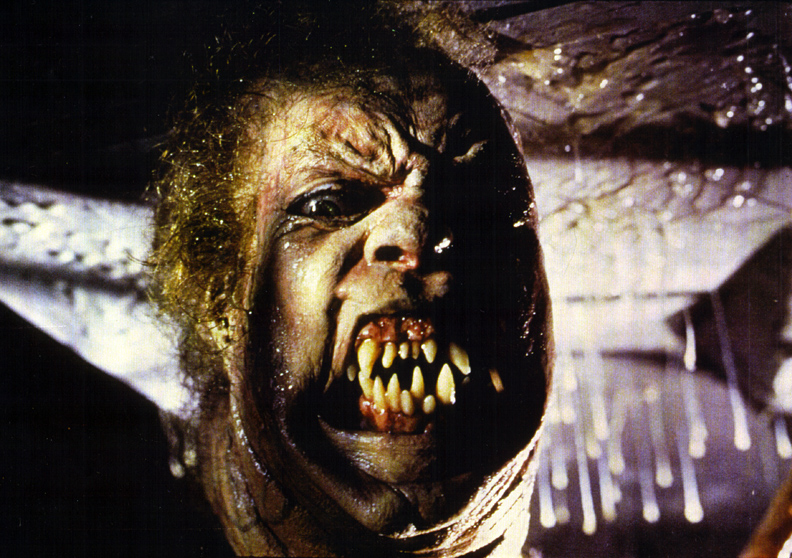
The shape-shifting extraterrestrial being can assimilate any life form; its transformation is pure chaos and one of the most original monsters in the history of cinema. The special effects for “The Thing” were designed and created by Rob Bottin, who was only 22 at the time of production, and had already scared audiences with special effect work on the film “The Howling”, creating the werewolf’s transformation.
The young special effect whiz created some of the most imaginative effects for “The Thing” and cinematographer Dean Cundey said this about working with Bottin: “There was always the case of Rob wanting less light, so we developed techniques of little tiny spots of light and shadows, and also, you never really looked blatantly at a rubber creature.”
Bottin’s suggestion to the cinematographer makes the monster even more ominous, because most of the time, the creature is hiding in the shadows and what you don’t see is just as scary as what you do see. Bottin worked on the production seven days a week, even sleeping on the set; this work routine would catch up to him and Bottin ended up being admitted to a hospital.
Special effects artist Stan Winston had to come in and complete one of the most memorable scenes in the movie, when the Alaskan Malamute transforms into the Thing inside the dog kennel. The grotesque nature of the monster transformation and its ability to hide in plain sight by assimilating both man and animal makes the alien a dangerous antagonist, and one of the best monsters to ever be featured in a film.
4. John Carpenter
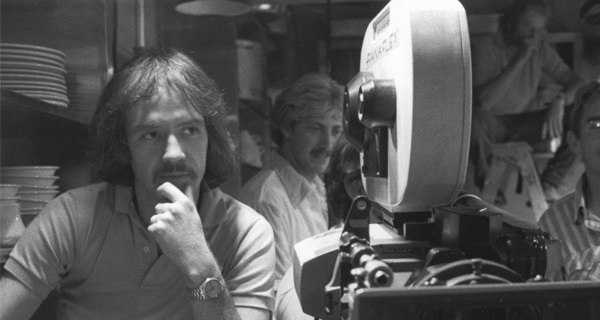
With films like “Assault on Precinct 13”, “Halloween”, “Escape from New York”, and “They Live”, Carpenter was more like a cinematic rebel than the usual journeyman director. All of his films were anti-establishment, and not only did he direct good films, but he often placed subversive themes in most of his movies.
There are two works of art from the 20th century that have warned society about the dangers of totalitarian governments that has reached cult status, and that’s George Orwell’s book “1984” and John Carpenter’s film “They Live”. Michael Wilmington, a film critic for the Los Angeles Times, summed up the impact of “They Live” in a ominous review: “The joke is in the material; the idea itself is funny and daring. And sometime soon, ‘They Live’ suggests, with grim, a knowing wink, the joke may be on us.”
Carpenter was a filmmaker ahead of his time, and “The Thing” is his best work because he deals with the themes of paranoia and man turning against man, and hiding inside this great horror film is a powerful message and commentary about the survival of humanity.
5. The Ending
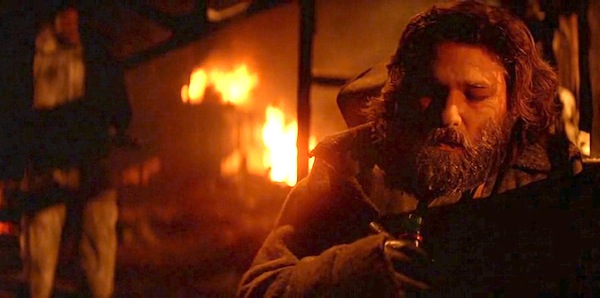
The non-traditional Hollywood ending is what makes the movie unforgettable. It’s no surprise the two alpha males, MacReady and Childs, are the last two men standing. They defeated the alien, but sadly, their reward is certain death as the uncompromising elements will soon kill both men.
You can’t help but wonder or hope somehow that the two remaining characters survived, but the audience knows it’s unlikely. The heroes don’t just defeat the alien, but they pay the ultimate sacrifice in giving their lives ,and the two last survivors share a bottle of whiskey while waiting for death to arrive.
Taking advice from his film editor Todd Ramsey, Carpenter filmed an alternate ending where MacReady is rescued and given a blood test revealing he’s still human. But being a rebel, Carpenter stuck with original bleak ending, and it was the right choice because one of the most memorable things about the film is its uncompromising finale.
6. Best Comeback In Cinema
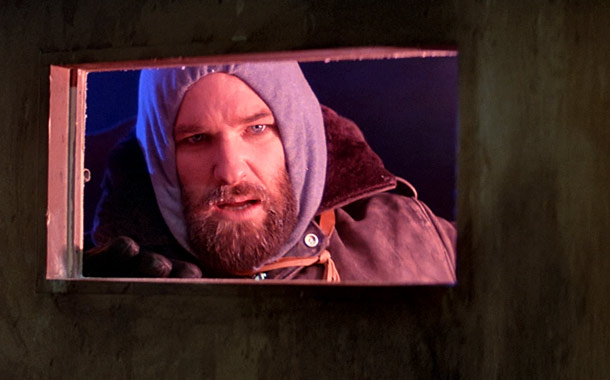
Critics hated “The Thing” when it was first released in theaters and audiences gave it a lukewarm reception, but as time passed, it went from being hated to being praised by critics and audiences alike. Present-day critics love the movie, and film critic Jeff Beck gave the following review: “John Carpenter’s ‘The Thing’ boasts outstanding special effects, skilled direction and cinematography, and a tension-filled story, making for one of the legendary director’s most cherished works.”
And film critic Tim Brayton summed it up best with his critique of the movie: “Something close to an absolutely perfect exercise in how to construct a thriller.” Carpenter made a film that was truly ahead of its time, making “The Thing” not only his greatest film, but also the best horror movie of all time.
Author Bio: R. Prince is a filmmaker from Harlem, New York and the author of the book How to Roll a Blunt for Dummies.